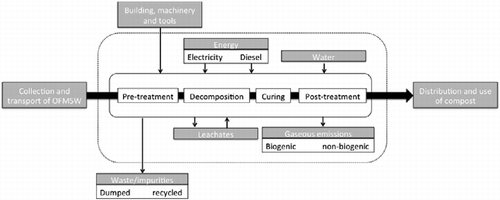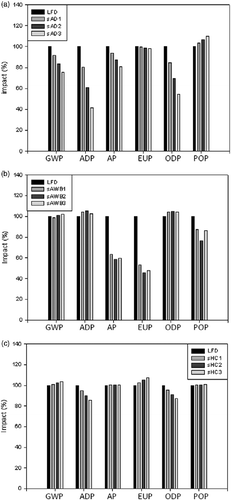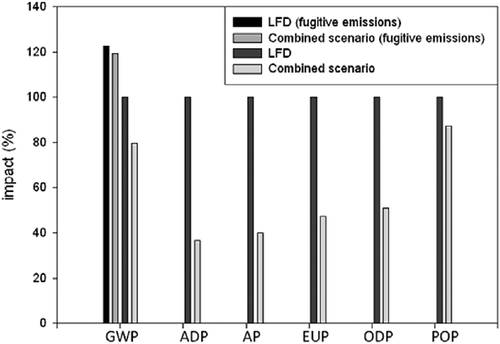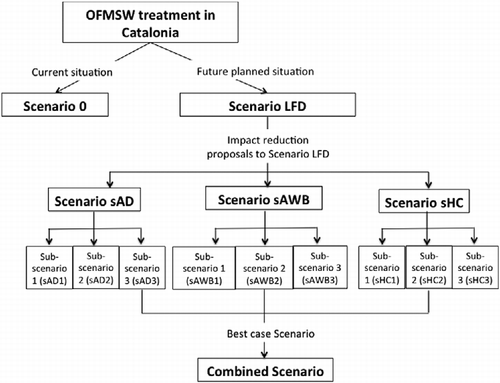Figures & data
Table 1 Inventory data obtained from the installations considered in this study (AD: anaerobic digestion; CT: in-vessel composting; AWC: aerated windrows composting; TWC: turned windrows composting, HC: home composting) previously published in (Colón et al. Citation2012). AWB (aerated and turned windrows with gaseous emissions treatment) data have been theoretically calculated.

Table 2 Impact categories determined for OFMSW treatment plants representative of the treatment technologies implemented in Catalonia (Colón et al. Citation2012).
Table 3 Scenario 0: OFMSW treatment technologies, design capacity per type of plant, percentage of the total waste treated (in brackets), impact categories of the installations in operation and % contribution to the total impact (in brackets) (AD: anaerobic digestion; CT: in-vessel composting; AWC: aerated windrows composting; TWC: turned windrows composting).
Table 4 Impact categories under Scenario LFD (Landfill Directive requirements) and % contribution to the total impact (in brackets), quantity of waste treated per type of plant and percentage of total waste treated (in brackets) (AD: anaerobic digestion; CT: in-vessel composting; AWC: aerated windrows composting; TWC: turned windrows composting).
Table 5 OFMSW treated by each treatment technology under the different scenarios and sub-scenarios considered (total OFMSW treated = 921 Gg year–1) and percentage of total waste (in brackets) (AD: anaerobic digestion; CT: in-vessel composting; AWC: aerated windrows composting; TWC: turned windrows composting; AWB: aerated windrows with gaseous emissions biofiltration; HC: home composting).



